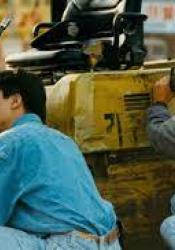Koreatown, LA
Koreatown in Los Angeles, California was the unfortunate fodder for over $400 million worth of damages during the LA Riots of 1992. However, even before that, one of the most pivotal events leading up to the destruction of Koreatown happened here. When Soon Daju killed 15-year-old Latasha Harlins over a can of orange juice, racial tensions between Korean-owned stores and their Black customers were palpable (Smith).
These racial tensions are said to be the reason why Koreatown was specifically targeted during the riots, and these racial tensions are pushed upon even today. The “Roof Korean” hashtag-that was trending just last year-is an example of this, as it was presented to specifically combat the “Black Lives Matter” movement. This is done by reminding Koreans of their brutal past relations with the Black-American community, in a further effort to separate the two minority groups (Wong).
Additionally, going along with the idea of changing the Korean-American identity touched upon in the timeline and gallery elements, the change geographically related to the identity shift as well. The shifting borders of the neighborhood, as well as the change of business names reflected what Korean-Americans had become after riots. An example of this being a location founded after the riots, named “Champions Market'' after how Korean-Americans had survived the LA riots (Tangherliini 154). This can also be viewed under a symbolic lens, as the destruction of Koreatown additionally destroyed what the Korean identity used to be.
Sources:
Tangherliini, Timothy R. “Remapping Koreatown: Folklore, Narrative and the Los Angeles Riots.” Western Folklore, vol. 58, no. 2, Western States Folklore Society, 1999, pp. 149–73, https://doi.org/10.2307/1500164. Accessed: 5 November 2021.
Smith, Erika D. “Column: The killing of Latasha Harlins was 30 years ago. Not enough has changed.” Los Angeles Times, 17 March, 2021,https://www.latimes.com/california/story/2021-03-17/latasha-harlins-memorial-playground-black-lives-matter-south-los-angeles. Accessed 3 November 2021.
Wong, Brittany. “The Real, Tragic Story Behind That ‘Roof Korean’ Meme You May Have Seen.” The Huffington Post, 11/6/2020. https://www.huffpost.com/entry/roof-koreans-meme-know-real-story_n_5ee110a1c5b6d5bafa5604f3. Accessed 4 November 2021.
Parent Map
Coordinates
Longitude: -118.300891800000

